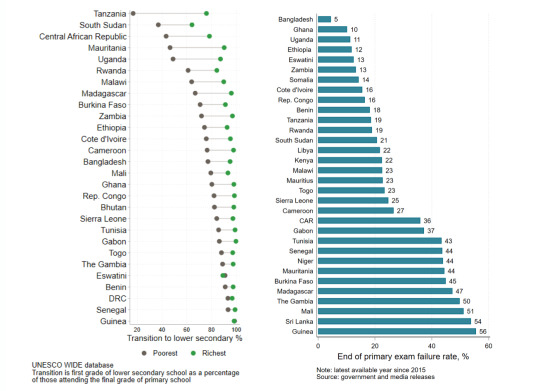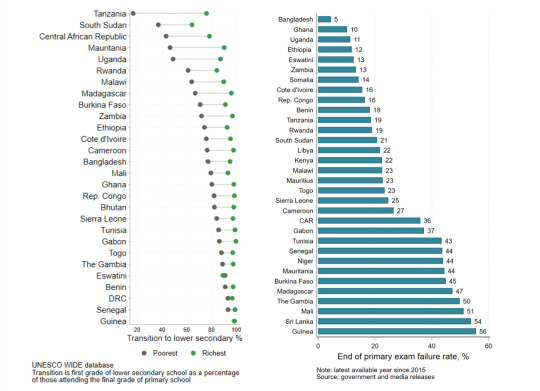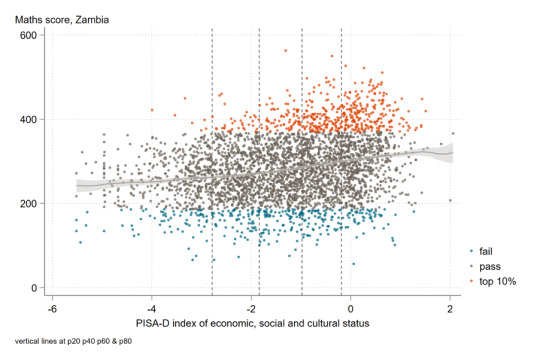#when KCSE results will be released
Explore tagged Tumblr posts
Text
Confirmed: KCSE Results To Be Released On This Date
The results for the Kenya Certificate of Secondary Education for the 2022 class will be released tomorrow. This is according to available news from the ministry of education that CS Ezekiel Machogu will be declaring the results at the Mtihani House in Nairobi so that the more than 800,000 candidates can know how they performed. Going by how he released the KCPE results, much is not expected as…

View On WordPress
0 notes
Text
Stop speculating when KCSE results will be released – Magoha warns
Stop speculating when KCSE results will be released – Magoha warns
Stop speculating when KCSE results will be released – Magoha warns Education Cabinet Secretary George Magoha has warned Kenyans against rumour-mongering on when the Kenya Certificate of Secondary Education (KCSE) will be released. His remarks came hours after the KCSE exams marking exercise came to an end on Friday. Speaking at Starehe Boys Centre and School in Nairobi, the CS said the experts…

View On WordPress
0 notes
Text
A Case for Abolishing High-stakes Exams—This Year and Every Year
New Post has been published on http://khalilhumam.com/a-case-for-abolishing-high-stakes-exams-this-year-and-every-year/
A Case for Abolishing High-stakes Exams—This Year and Every Year

Education policymakers the world over are tackling the question of what to do about high-stakes exams this year. With schooling disrupted for months, many have cancelled exams or are implementing changes to their timing and means of administration. But beyond this year’s cohort, the COVID-19 shutdown is drawing attention to high-stakes exams and opening up discussions around their fairness as a way of filtering children through the education system. In this blog post, we suggest that governments adopt fairer policies to manage transition from one level of education to the next and design these in ways that can equalise educational opportunities for all children.
COVID has thrown exam plans into question for 2020
Last month, Kenya cancelled its 2020 primary and secondary leaving exams—the KCPE and the KCSE. Students will return to schools in January and repeat the grades they left when schools were closed, before sitting their tests. The current Standard 8 cohort will begin their preparations after almost a year out of school and with highly uneven learning, economic, and psychological experiences in that time. Thousands of miles away, the Colombian Institute for the Evaluation of Education (ICFES) is trying to avoid an exam cancellation. Students in the country’s Quindio department sat for a virtual, practice version of the Saber 11 exam in June and another ICFES test, designed for 100,000 technical students, is scheduled to be held online next month. ICFES has confirmed that private school candidates will be taking the exam in person, although there is still no exam or registration date for the remaining 85 percent of candidates. A switch to an online exam—given only 53 percent of households have internet access—threatens to widen the gap between poor and rich children at secondary and tertiary levels in Colombia. There may be no government response that can fully mitigate COVID-19’s impact and maintain fairness for 2020’s exam candidates. But high-stakes exams are unfair every year, not just during a pandemic: large differences in home support and access to resources are not new. Exams reinforce income inequality, create perverse incentives in the classroom, and limit the number of students who could benefit from more education.
Filtering on exam scores reinforces income inequality
Exams were introduced in the 19th century as a supposedly fair and transparent way to allocate scarce educational benefits, by selecting the most able and by removing opportunities for nepotism. Since then, we’ve learned a lot about child development and how early life experiences make selective high-stakes tests anything but a level playing field. Children from the poorest backgrounds are more likely to be exposed to poverty and malnutrition and accumulate developmental deficits from their first years, showing up in indicators such as stunting before age five. When children begin school there is also a clear tendency for those from wealthier backgrounds to go to better quality primary schools and to access private tuition. As a result, socioeconomic status (SES) has become a reliable predictor of exam performance. When an exam is then used to filter students from one educational level to the next, it reinforces intergenerational income persistence. Data from household surveys, public exams, and large-scale assessments help to show this.
Across low- and middle-income countries, poorer students who reach the final grade of primary progress into secondary at much lower rates than their peers (Figure 1). Lower transition rates are due to a combination of school-fee and school-location barriers, along with filtering on exams.
The primary leaving exam is a genuine hurdle that constrains access to secondary in the low- and middle-income countries that release these data (also Figure 1). The height of the hurdle is not universal—some countries are highly selective at the end of primary whereas others barely filter.
The likelihood of passing an exam rises with SES. Large-scale assessments in exam subjects and grades routinely show a steep “social gradient” in performance, beginning from EGRA in early grades to PASEC, SACMEQ, and PISA-D in upper primary and later.
Figure 1. Poorer students progress to secondary at much lower rates than their peers (left); and part of the reason for this is that the exam is a genuine hurdle in most countries (right)

Note: shown for Sub-Saharan African and South Asian countries for which we can obtain information on public exam pass rates and primary to secondary school transition.
Combining exam pass rates with data from PISA-D (a large-scale international assessment) on performance and student background, it’s possible to move closer to the direct impact of exams on transition (Figure 2 for Zambia). This is only an approximation: it’s nationally representative but does not use national exam data; it’s sampled on age rather than school grade; and SES is estimated within school-goers so it excludes children who have dropped out. But it still captures an important relationship between SES, performance, and the relevant exam threshold. Figure 2. Estimating who an exam excludes, using PISA-D data

Under this approximation, 15 percent of the poorest students will fail the exam compared with 7 percent of their richest peers, which would explain around half of the difference in primary-to-secondary transition between these groups in Zambia. Beyond pass/fail, the richest quintile also supplies half of the top performers, who will have better access to performance scholarships and for placement into selective secondary schools, which may impact longer-run outcomes. A thorough investigation of exam impacts across countries will account for system-specific details, including: the mix of central and teacher-based assessments that determine the school-leaving grade; the nature of the wealth gradient in achievement; school locations and the clustering of achievement within schools; policies for school fees & placement, especially where there are national “elite” schools or equitable access policies; and so on. The extent to which these features influence the impact of an exam on social mobility is an important direction for future research. Watch out for more from CGD on this.
High-stakes exams encourage schools to ignore students with little chance of doing well
The theoretical benefits of high-stakes examinations are convincing—they may raise average student achievement by improving incentive structures for students and teachers; and parents use exam information to monitor school and child performance. When centralised exams are used, they may function better as incentives than decentralised tests, and good grades in high-stakes tests can motivate students in the longer-term. But when accountability systems and school reputations are based on the achievement of (some) students, we observe teachers targeting instruction to marginal students to push them over the line, leaving those who are struggling further behind or reducing progress among highest achievers. As part of this process, teacher effort may shift to test preparation sessions to raise short-run test scores, and we see negative incentive effects for lower-achieving students, particularly where exam thresholds are high. Another approach to increasing passers is the manipulation of scores around the pass mark, observed even in low-stakes assessments (and perhaps rendering data on student achievement useless as an indicator of system performance). The use of high-stakes exams also affects how schools teach students. Resources are invested in tested subjects, teachers prioritise the exam syllabus as they “teach to the test” and students improve test-specific skills and transitory effort. However, this shift narrows the content and cognitive range covered in schools and can have negative consequences for learning where the exam is geared towards selection, while the curriculum prioritizes content mastery. A more sinister dynamic is the systematic exclusion of low-achieving students before they reach high-stakes exam hurdles. Evidence from Tanzania, Chile, and Burkina Faso shows exams force dropout and repetition as a “washback” effect on low-achieving and low-SES children with a result being lower total enrolment, bulges in exam grades (or the one before) and fewer test takers.
Using exams to filter prevents poorer students from making human capital investments with high returns
Before removing an exam threshold, it would be helpful to know not just that the average returns to schooling are high but that they would be equally high if more marginal students were admitted. It is possible, for example, that academically marginal students lack the preparation necessary to benefit from more education so that the returns for these students are much lower than the average. The limited evidence that exists on this points in the other direction. During the short-lived French “revolution” of 1968, high-stakes school exams were abandoned, dramatically reducing the achievement level required to enter university for that year’s cohort. We are likely to see many similar cases in response to COVID-19. Some 40 years later, it has been shown that this event increased the future wages of the relevant cohort and the educational performance of their children—despite the fact many would not have advanced in a normal year. In less remarkable circumstances, evidence from Kenya shows that marginal admittees to secondary school acquire large human capital and employment benefits, reducing low-skill self-employment and weakly increasing formal employment. From research on access to college in the United States, impacts of the marginal college admission on earnings are large, particularly for poorest students. It’s unlikely that these findings would generalise to all students, but authors argue that a reduction in the cutoff required for admission at the next level would enable a decent share of currently excluded students to make human capital investments with high returns.
Many countries are concluding that it is unfair to sit high-stakes exams after a period of disrupted preparation. This makes sense, but data on the link between student SES and exam performance in “regular” years shows that the circumstances of 2020 are not exceptional. Wealth-based inequalities emerge in the early grades and persist into exam years, reducing the share of children from poorest backgrounds that are selected for the next level. An explanation is needed for why this level of inequality in selection is acceptable in non-COVID years. Shortly before Kenya’s exam cancellation, Wilson Sossion, Secretary-General of the Kenya National Union of Teachers, pointed out that the “KCPE and KCSE are not a ticket to heaven.” But there is no escaping that these exams are incredibly high-stakes for 2 million Kenyan candidates each year. Exam success largely determines opportunity to study at the next educational level: children being filtered out of the system because of their performance in a high-stakes exam cannot claim the substantial learning and income benefits of further education. Using test scores to allocate scarce resources is one mechanism that prevents education from being an equaliser of opportunity, with damaging effects in the classroom, particularly for low-SES students. Governments postponing or cancelling tests because of the COVID-19 shutdown should consider the permanent abolition of high-stakes exams and instead adopt fairer ways to manage transitions from one level of education to the next. We are grateful to Susannah Hares, Justin Sandefur, and Lee Crawfurd for their helpful contributions.
0 notes
Text
Official KNEC KCSE 2017 results, Checking sms code, online portal: How to get
KNEC KCSE 2017 Results checking sms code for (Safaricom, and Airtel) and online portal update: The Kenya National Examination council (KNEC) has indicated that candidates who has sat for their form four examinations in 2017 should expect the outcome this week December 2017. Find below a procedure on how get the results once they are released.
Official KNEC KCSE 2017 results, Checking sms code,…
View On WordPress
#how to check kcse 2017 results#kcse 2017 appeal for remarking#kcse 2017 results online#kcse cancelled results#kcse code 22252#knec portal kcse 2017#matiangi announce 2017 kcse results#news on kcse 2017 results#Official KNEC KCsE 2017 results#ranking of 2017 kcse schools#sms code to check kcse 2017 results#when will kcse results be released
0 notes
Text
2019 KCSE Results: List of Top 10 Candidates Countrywide
2019 KCSE Results: List of Top 10 Candidates Countrywide
The 2019 KCSE results have finally been released with Education Cabinet Secretary Prof George Magoha naming Buluma Tony Wabuko from Kapsabet Boys high school as the top student.
Buluma was also among the top candidates when he sat his KCPE exam in 2015 having scored 433 marks at St. Thomas Aquinas, Nakuru. During that year, the top KCPE candidate registered 449 marks, according to…
View On WordPress
0 notes
Text
When shall KCSE 2021 results be out? Here is the date
When shall KCSE 2021 results be out? Here is the date
Are KCSE 2021 Results Out? KCSE 2021/2022 Exam Results shall be released by April 22, 2022. The 78,000 registered students should expect their results to be announced by April 22nd, KNEC confirmed that they have trained more examiners and expect the exam to be marked within 15 days. Is KCSE 2021 Exam Marking Over? When shall kcse 2021 exam marking be finished? The fast marking and releasing of…

View On WordPress
0 notes
Text
When Should We Expect KCSE 2021 Exam Results To Be Released?
When Should We Expect KCSE 2021 Exam Results To Be Released?
Are KCSE 2021 Results Out? KCSE 2021/2022 Exam Results shall be released by April 22, 2022. The 78,000 registered students should expect their results to be announced by April 22nd, KNEC confirmed that they have trained more examiners and expect the exam to be marked within 15 days. The fast marking and releasing of kcse national examination for 2021/2022 is meant to allow enough time for kcse…

View On WordPress
0 notes